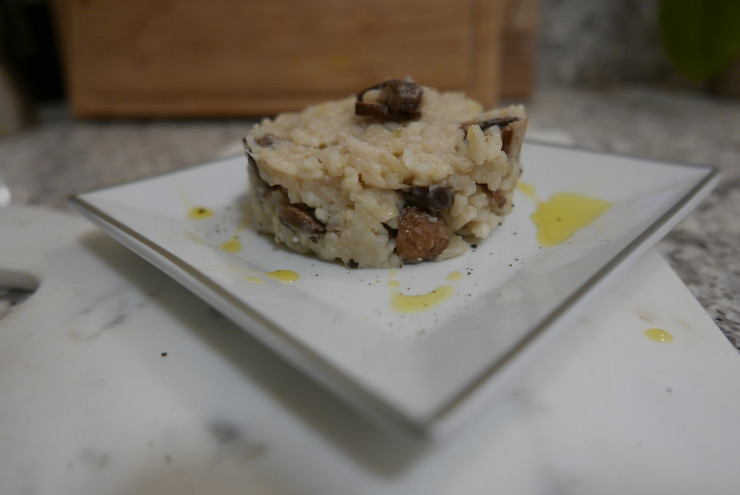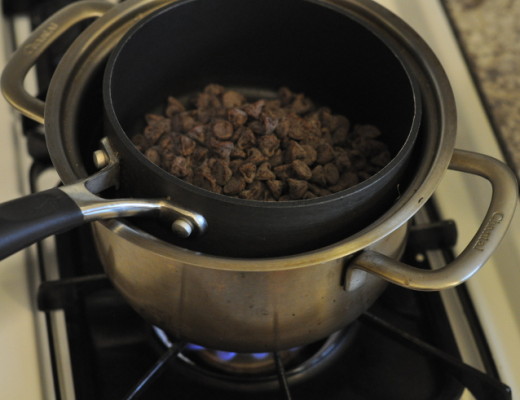Risotto is a typical Italian way to eat rice. The origin of the risotto is very modest and tied to the rhythms of rural life and, despite this, its preparation is quite elaborate.
Among the different kinds of rice to use, there are some particularly suitable for the preparation of risotto like: Arborio, Baldo, Carnaroli, Maratelli, Rosa Marchetti, Sant’Andrea, Vialone nano. All varieties are grew in Italy. You can find some of them at Italian deli markets around the city.
There is an agreement on the general steps to do to make a good risotto and I’m going to list them with a little description for you. Don’t miss the steps and the result will be great.
How to make Risotto:
Browning the base:
The art of browning is learned with practice rather than theory. The choice of onions, shallots or garlic should be made depending on the ingredients that will join the rice in the recipe. For instance: onions have a more delicate flavor, garlic is stronger and shallot is in between the two. Identified the right aroma, proceed to an accurate trimming and slicing it or finely chop: the more minute are the parts, the more intense the initial scent; chopped coarser, smells less at the beginning but the taste is more persistent in the risotto.
As for the use of butter or oil, not only decide whereas the harmony of flavors, but also evaluated the dietary aspect. The butter must be tasty compact, warm color. The oil should be chosen among those virgin olive oil, with a particular eye for cold pressed one. The fat you have opted for must form a uniform film on the bottom of the pan. The vegetables (onion, shallot or garlic) are added when the base is very hot and the flame must be gentle. The mixture should slowly brown: in this way the harshness of the flavor fades away.
Roasting the rice:
The rice is roasted adding it to the browned base. At this stage it is necessary to stir vigorously to ensure that all the grains are uniformly roasted. The operation can be considered complete when the grains are almost transparent. With experience you’ll recognize the intense smell that emanated at this point. During roasting is the best time to add salt that will be absorbed from the grains. Roasting the rice takes from 40 seconds to a minute.
Blend with the wine:
Blend with white wine, dry and not too aromatic: it serves to increase the acidity of the risotto and originally was used as a symbol of wealth. Sometimes we could just use the broth, like in the case of a tomatoes risotto, due to the acidity of tomatoes we don’t need to make it more acidic. Some Chefs don’t like to use wine even for a mushroom risotto. Make your consideration and try…
Cooking with Broth:
Cooking the rice with just a classic vegetable broth, celery, carrot and onion. Or with meat broth, with a mixture of chicken, veal and beef, or fish, using heads and fish bones. The broth should be always on the boil, very hot and neutral, that is never salty. When should be added? As Rice asks! The rice never have to dry out, but always be fluid.
Mixing:
The risotto should never left alone and always be gently mixed from start to finish. It helps releasing the starches and so creating a creamy texture.
Cooking time:
There is no a specific rule, because it varies on the kind of rice you use and what kind of texture you want your risotto to have , but generally speaking from 16 to 18 minutes.
Adding the ingredients:
Add the ingredients you want, from half way cooking on, after five or six minutes. The acidic ingredients slow down the cooking, when creams, pureed vegetables accelerate because they mix within the grain. The best way to figure out if the risotto is ready, is to taste. There is no other method.
Creaming:
It is perhaps the most important step. Once cooked, allow the rice to rest for thirty seconds off the heat to help relax the starches. Then creaming with butter, cold from the fridge, and cheese (about a spoon per cup of rice) . The rice must be smooth and creamy in perfect balance (not too thick or not too liquid). So you can the famous wave motion while mixing.



No Comments